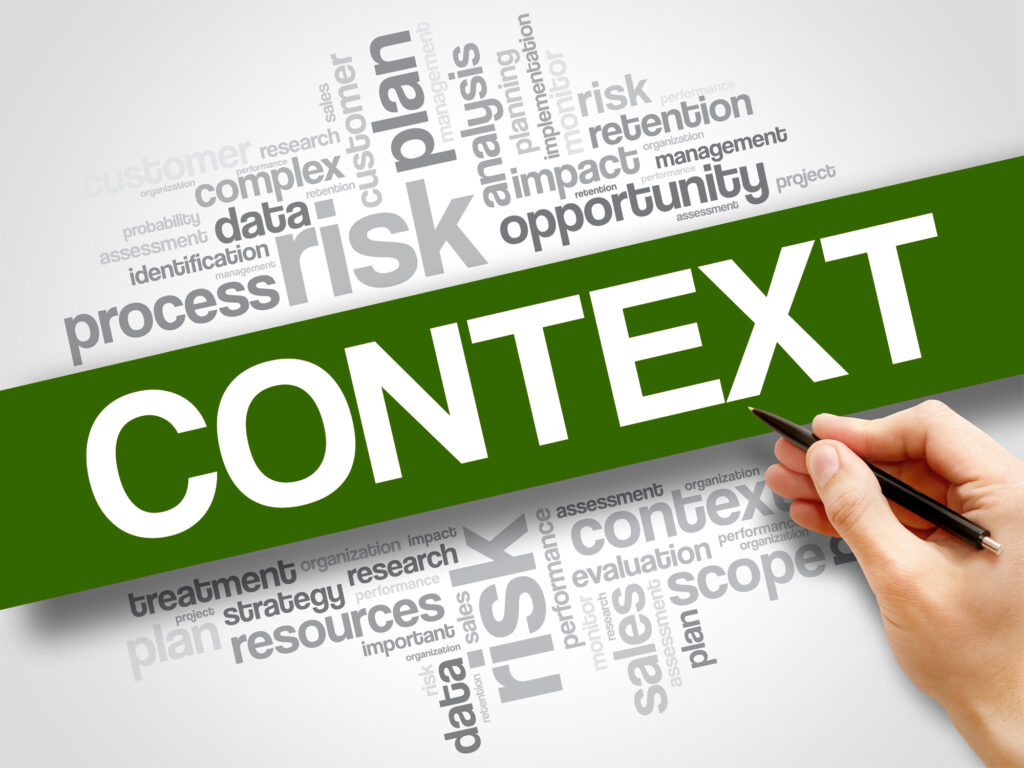Developing organizational context involves a strategic and holistic approach.

Developing organizational context involves a strategic and holistic approach to understanding and shaping the various elements that influence an organization’s functioning. Here are steps and considerations for developing and refining organizational context:
1. Define Mission and Purpose:
Clearly articulate the organization’s mission and purpose. Ensure that these statements align with the core values and long-term goals of the organization.
2. Establish Core Values and Culture:
Define and communicate the core values that guide the organization’s culture. Foster a culture that promotes collaboration, innovation, and ethical behaviour.
3. Assess and Adjust Organizational Structure:
Regularly review and, if necessary, adjust the organizational structure to ensure it supports efficient communication, clear roles and responsibilities, and effective decision-making.
4. Leadership Development:
Invest in leadership development programs to ensure leaders possess the skills and qualities needed to guide the organization. Foster a leadership style that aligns with the organization’s values.
5. Continuous Environmental Analysis:
Establish mechanisms for regularly monitoring and analyzing the external environment. Stay informed about industry trends, market conditions, regulatory changes, and technological advancements.
6. Stakeholder Engagement:
Actively engage with key stakeholders to understand their needs, expectations, and concerns. Build strong relationships with customers, employees, suppliers, and other relevant parties.
7. Emphasize Learning from History:
Encourage a culture of learning from past experiences. Analyze both successes and failures to inform future decision-making and improve organizational practices.
8. Invest in Technology and Infrastructure:
Stay abreast of technological advancements and invest in the necessary infrastructure to enhance efficiency and effectiveness. Embrace digital transformation where relevant.
9. Talent Management and Development:
Implement strategies for attracting, retaining, and developing top talent. Invest in employee training and development programs to ensure a skilled and motivated workforce.
10. Financial Planning and Management:
Develop robust financial planning and management practices. Regularly assess the financial health of the organization and make strategic adjustments as needed.
11. Risk Management:
Establish a comprehensive risk management framework. Identify, assess, and mitigate risks to ensure the organization can navigate challenges and uncertainties.
12. Effective Communication Strategies:
Foster transparent and effective communication channels within the organization. Ensure that information flows seamlessly across teams and levels, promoting a culture of openness.
13. Alignment of Goals:
Ensure that individual and team goals align with the broader organizational objectives. This promotes a sense of purpose and unity among employees.
14. Adaptability and Innovation:
Foster a culture of adaptability and innovation. Encourage employees to embrace change, think creatively, and contribute ideas to drive continuous improvement.
15. Social Responsibility and Sustainability:
Consider the social and environmental impact of organizational activities. Develop and communicate a commitment to corporate social responsibility and sustainability.
By actively developing these aspects of organizational context, leaders can create a resilient and adaptable organization that can thrive in a dynamic and competitive environment. Regular assessments and adjustments will be necessary to ensure ongoing alignment with the organization’s goals and the evolving external landscape.

